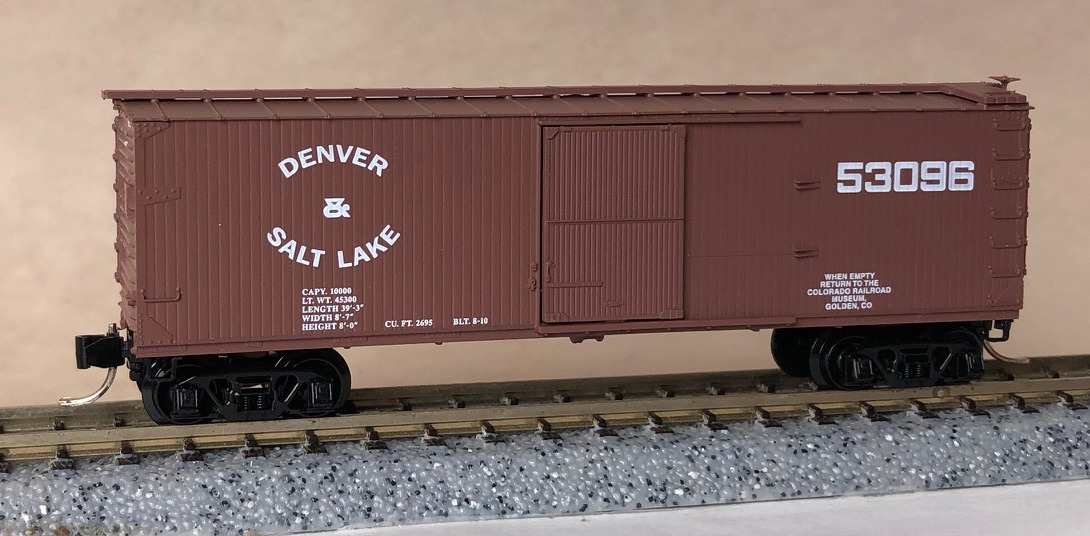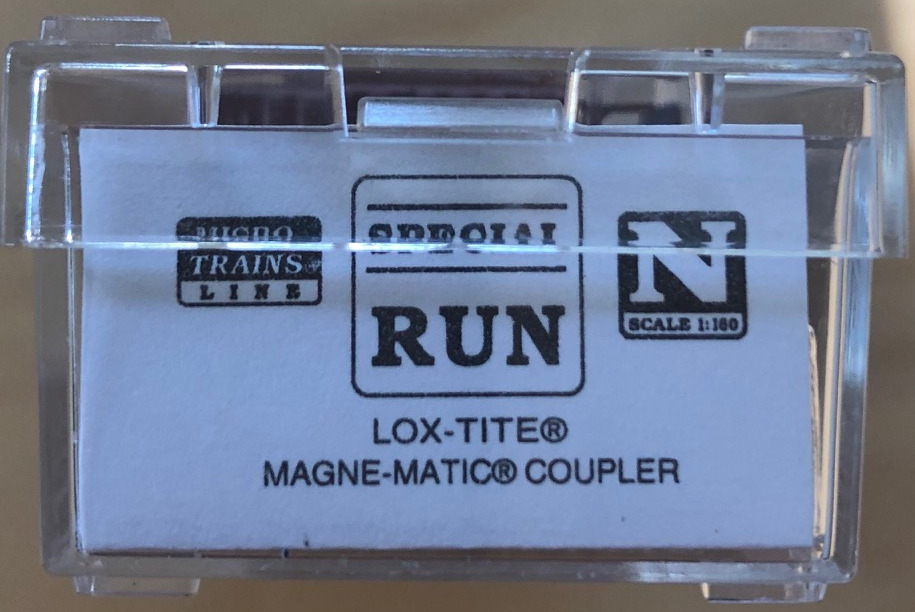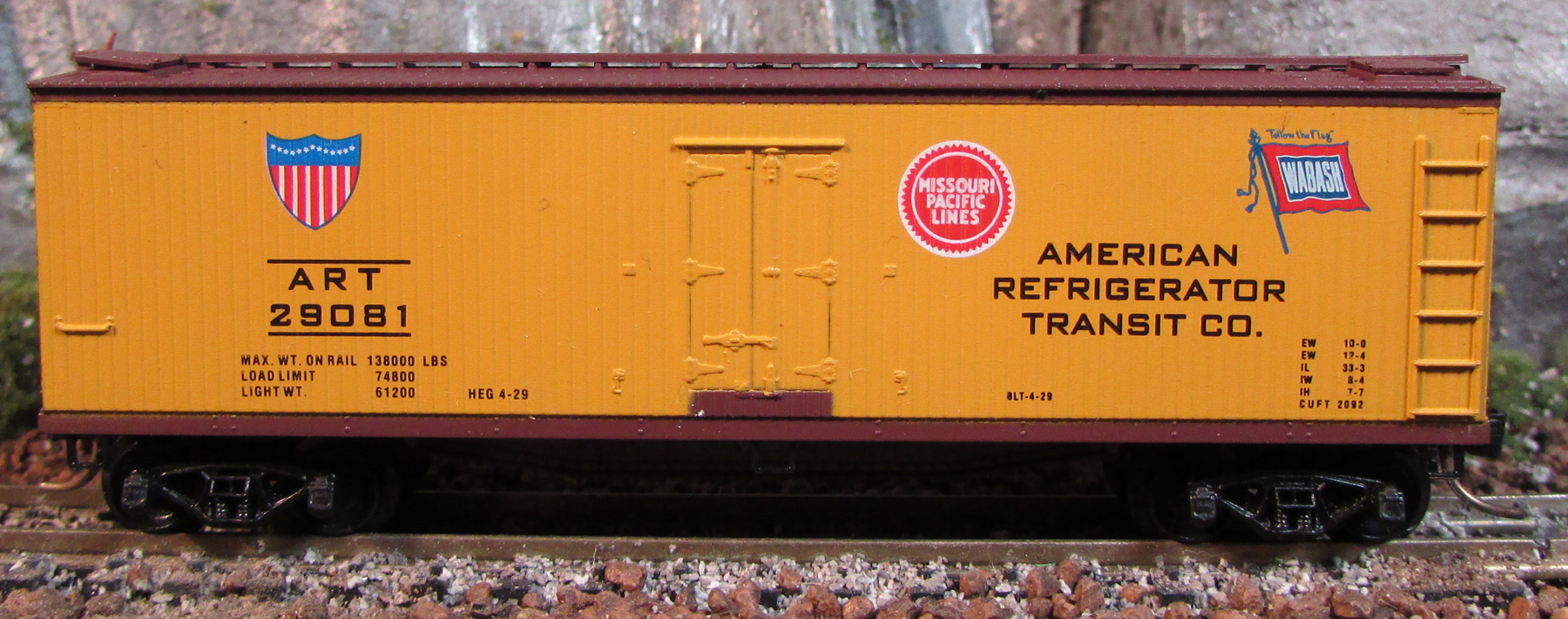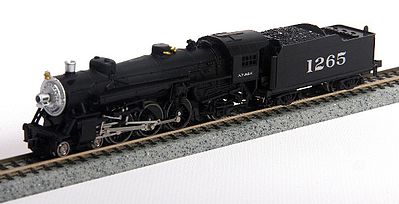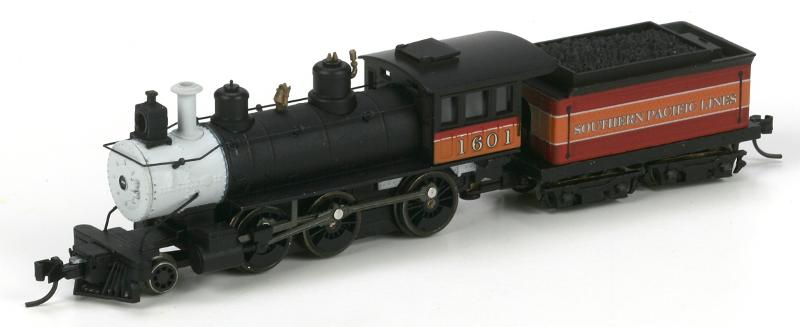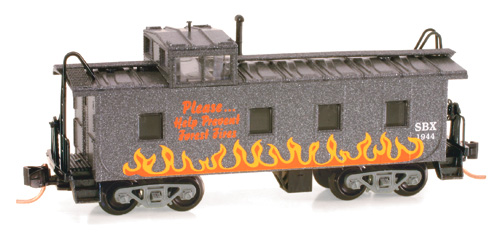Specific Item Information: Only available as part of 3-Pack NSC 98-55.
Prototype History: Double sheathed all-wood boxcars in 34', 36' or 40' length were built with trussrods into the 1900's. By about 1910-15 cars often were being built of wood but with steel underframes. BTW many early boxcars were only about 8-1/2' high, though taller 10' cars were beginning to be built by the WW1 era (like the USRA wood boxcar) but that didn't become the norm until the late 1930's.
Later in the 20's-30's, some cars were built with double or single sheathed woodsides but steel underframe, roof and ends. In the later 30's into the 40's some older cars built with wood except for the steel underframes were rebuilt with steel ends and roofs. Some of these cars with steel roof and ends (either new or rebuilt) lasted into the 1960's.
During WW2, steel was in short supply, so some new boxcars were built with steel roof and ends, but wood sides. These too sometimes lasted into the "diesel era", although many were rebuilt with steel sides after the war.
Later in the 20's-30's, some cars were built with double or single sheathed woodsides but steel underframe, roof and ends. In the later 30's into the 40's some older cars built with wood except for the steel underframes were rebuilt with steel ends and roofs. Some of these cars with steel roof and ends (either new or rebuilt) lasted into the 1960's.
During WW2, steel was in short supply, so some new boxcars were built with steel roof and ends, but wood sides. These too sometimes lasted into the "diesel era", although many were rebuilt with steel sides after the war.
Road Name History: 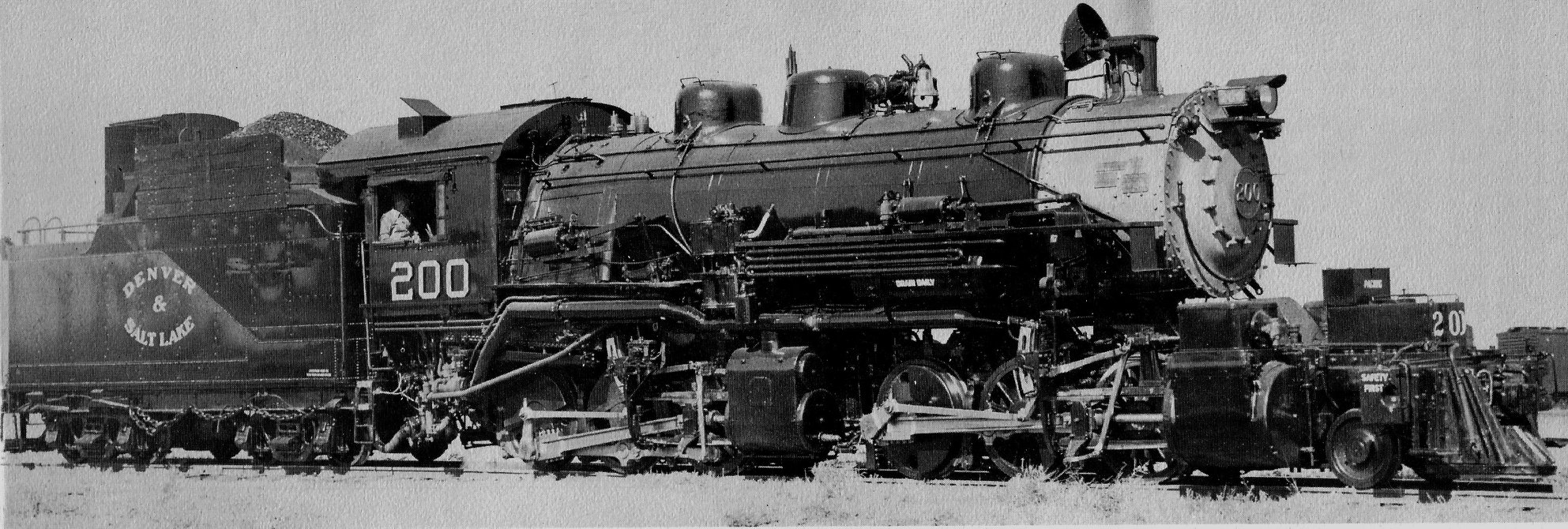 The D&SL was the result of the 1913 reorganization of the failed Denver Northwestern & Pacific Railway. The line ran west from Denver, Colorado into the teeth of the Rocky Mountains. Initially, the route featured a manageable 2.2% grade into South Boulder Canyon but the assault on Rollins Pass included the highest mainline crossing of a mountain range in North America at 11,670 feet with stretches of 4% grade. The line then descended the west face to Bond before turning north to Steamboat Springs and west again to Craig. That was as far as they had built at the time of the reorganization. They were barely a third of the way to the goal of Salt Lake City.
The D&SL was the result of the 1913 reorganization of the failed Denver Northwestern & Pacific Railway. The line ran west from Denver, Colorado into the teeth of the Rocky Mountains. Initially, the route featured a manageable 2.2% grade into South Boulder Canyon but the assault on Rollins Pass included the highest mainline crossing of a mountain range in North America at 11,670 feet with stretches of 4% grade. The line then descended the west face to Bond before turning north to Steamboat Springs and west again to Craig. That was as far as they had built at the time of the reorganization. They were barely a third of the way to the goal of Salt Lake City.
Operations over Rollins Pass were extremely difficult. The city of Denver was still seeking a through route to the west and offered to back the construction of what became the 6 mile Moffat Tunnel under James Peak that would bypass Rollins Pass. The tunnel opened for service in 1928. However, the D&SL still only went as far west as Craig. The D&SL line near Bond did come within 40 miles of the Denver & Rio Grande Western mainline at Dotsero. Rio Grande agreed to build a line from Dotsero up the Colorado River to a new connection on the D&SL near Bond. The new junction would be called Orestod (Dotsero backwards.) D&SL would then grant D&RGW trackage rights over their mainline to Denver. The connection was completed in 1934. In 1947, the Denver & Salt Lake was merged into the Denver & Rio Grande Western.

Operations over Rollins Pass were extremely difficult. The city of Denver was still seeking a through route to the west and offered to back the construction of what became the 6 mile Moffat Tunnel under James Peak that would bypass Rollins Pass. The tunnel opened for service in 1928. However, the D&SL still only went as far west as Craig. The D&SL line near Bond did come within 40 miles of the Denver & Rio Grande Western mainline at Dotsero. Rio Grande agreed to build a line from Dotsero up the Colorado River to a new connection on the D&SL near Bond. The new junction would be called Orestod (Dotsero backwards.) D&SL would then grant D&RGW trackage rights over their mainline to Denver. The connection was completed in 1934. In 1947, the Denver & Salt Lake was merged into the Denver & Rio Grande Western.
Brand/Importer Information: Micro-Trains is the brand name used by both Kadee Quality Products and Micro-Trains Line. For a history of the relationship between the brand and the two companies, please consult our Micro-Trains Collector's Guide.
Manufacturer Information:  Micro-Trains Line split off from Kadee Quality Products in 1990. Kadee Quality Products originally got involved in N-Scale by producing a scaled-down version of their successful HO Magne-Matic knuckle coupler system. This coupler was superior to the ubiquitous 'Rapido' style coupler due to two primary factors: superior realistic appearance and the ability to automatically uncouple when stopped over a magnet embedded in a section of track. The success of these couplers in N-Scale quickly translated to the production of trucks, wheels and in 1972 a release of ready-to-run box cars.
Micro-Trains Line split off from Kadee Quality Products in 1990. Kadee Quality Products originally got involved in N-Scale by producing a scaled-down version of their successful HO Magne-Matic knuckle coupler system. This coupler was superior to the ubiquitous 'Rapido' style coupler due to two primary factors: superior realistic appearance and the ability to automatically uncouple when stopped over a magnet embedded in a section of track. The success of these couplers in N-Scale quickly translated to the production of trucks, wheels and in 1972 a release of ready-to-run box cars.
Micro-Trains Line Co. split off from Kadee in 1990 to form a completely independent company. For this reason, products from this company can appear with labels from both enterprises. Due to the nature of production idiosyncrasies and various random factors, the rolling stock from Micro-Trains can have all sorts of interesting variations in both their packaging as well as the products themselves. When acquiring an MTL product it is very important to understand these important production variations that can greatly enhance (or decrease) the value of your purchase.
Please consult our Micro-Trains Collector's Guide

Micro-Trains Line Co. split off from Kadee in 1990 to form a completely independent company. For this reason, products from this company can appear with labels from both enterprises. Due to the nature of production idiosyncrasies and various random factors, the rolling stock from Micro-Trains can have all sorts of interesting variations in both their packaging as well as the products themselves. When acquiring an MTL product it is very important to understand these important production variations that can greatly enhance (or decrease) the value of your purchase.
Please consult our Micro-Trains Collector's Guide
Item created by: gdm on 2017-09-07 08:32:29. Last edited by George on 2024-09-11 13:40:00
If you see errors or missing data in this entry, please feel free to log in and edit it. Anyone with a Gmail account can log in instantly.
If you see errors or missing data in this entry, please feel free to log in and edit it. Anyone with a Gmail account can log in instantly.


